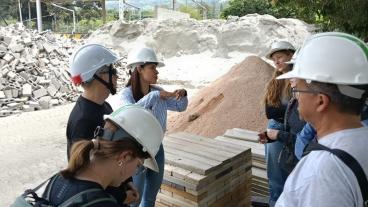Strokes are one of the leading causes of death in this country. Chemical and biological engineering professor Dr. Keith Neeves and department head Dr. Dave Marr recognize this significance and are combining chemical and mechanical methods to treat blood clots in stroke patients. Their research uses microbots, otherwise known as mobile robots, carrying the clot busting drug tissue plasminogen activator (tPA), as an inexpensive and noninvasive application in healthcare.
Currently, tPA must be used within the first three hours of somebody showing symptoms of a stroke, which makes it difficult to get to the hospital in time to treat the clot.
“If you could open up the therapeutic window so that it could be used in a longer time past its first presentation, that would be a pretty significant advance,” Neeves said.
Neeves works with graduate student Abimbola Onasoga to analyze blood clots under flow conditions. She uses her expertise to study blood samples, imitating what cells would look like when a clot forms. Physicians often don’t have an engineering background in fluid dynamics, so Onasoga is able to approach this research in a unique way.
While Neeves and Onasoga are examining blood clots, Marr is assembling microbots into different shapes and sizes. The devices he is designing have particles on the order of three microns, around one-twentieth the width of a human hair. These microbots are separately injected into the body, charged magnetically to attract to one another in the bloodstream and directed to the site of injury. After the microbots finish dissolving the clot, the device is turned off magnetically and the beads disassemble.
The ability to direct drugs to a particular area in the body is still a novel approach in the healthcare world. Marr hopes this research could have the ability to distribute healthcare into the doctor’s office and beyond.
“If we do enhance the ability to target, it could have applications in cancer as well,” Marr said.
Neeves said this field of research is challenging, as there are drugs that address bleeding disorders, but could cause complications with clotting.
“You end up walking a fine line. Can you prevent clotting without causing bleeding, and can you prevent bleeding without causing clotting?” Neeves said.
During 2013, Neeves and Marr received a $375,000 two-year grant from the National Institutes of Health to pursue this research. Next year, they will be working with neuroscientists at the University of Colorado School of Medicine to test animal models of the disease using their therapeutic strategies.
Contact:
Kathleen Morton, Communications Coordinator / 303-273-3088 / KMorton@mines.edu
Karen Gilbert, Director of Public Relations / 303-273-3541 / KGilbert@mines.edu



